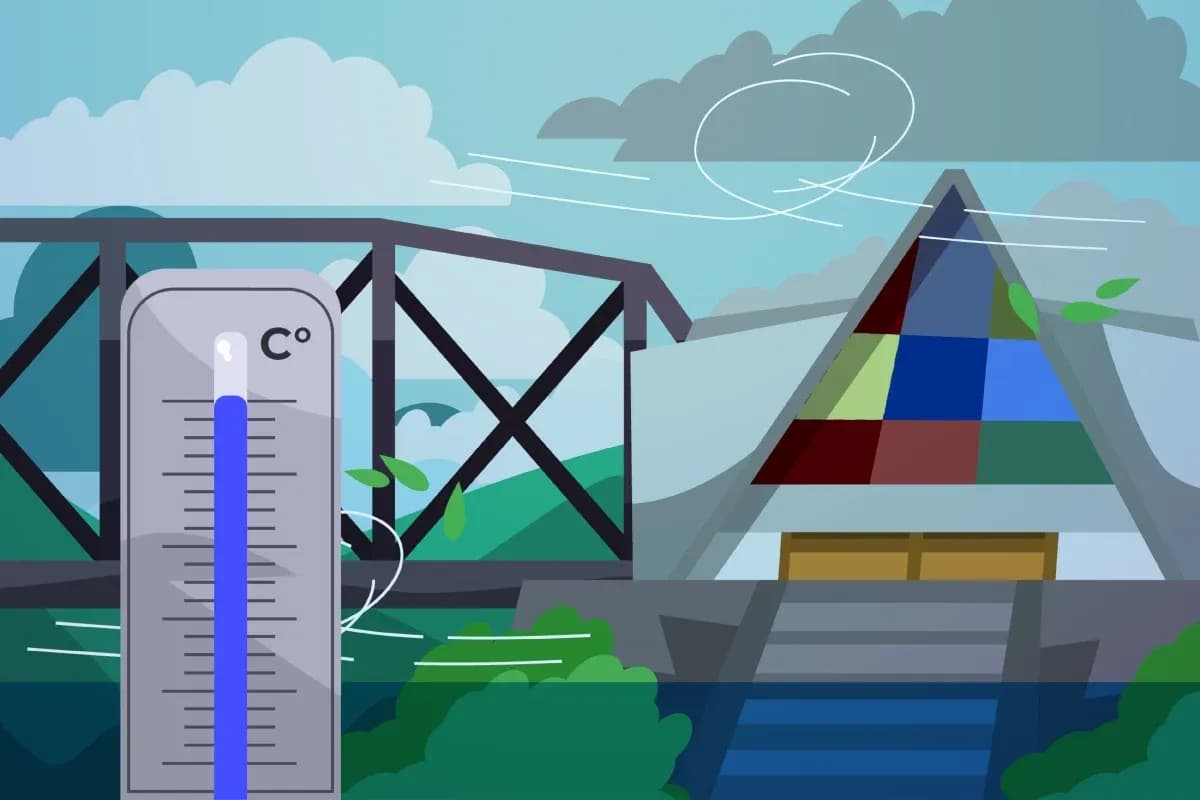When Winter Feels Like Summer: Unpacking Tucumán's Climate Paradox
Tucumán's climate paradox: Explore its wild daily shifts, from surprising winter warmth to sudden storms. See how locals navigate Argentina's unpredictable weather extremes.
The Unpredictable Dance of Elements
Imagine stepping out into a crisp winter morning, only to find yourself shedding layers by midday as temperatures soar, just hours before a cold front brings rain and a sharp chill. This isn't a hypothetical scenario for residents of , ; it's a typical day. The region's climate is a masterclass in meteorological paradox, where unseasonal warmth during winter months frequently gives way to dramatic, almost instantaneous shifts. Consider a July day, deep in the Southern Hemisphere winter, that begins with a mild 12°C and clear skies. By afternoon, the mercury comfortably climbs to 23°C, feeling more like a spring afternoon than the depths of winter. Yet, as evening approaches, the sky darkens, a rainy front sweeps in, and temperatures plummet to 15°C, transforming the pleasant warmth into a damp, cool night. This rapid transition, from sun-drenched warmth to impending downpour, isn't an anomaly but a defining characteristic of Tucumán's dynamic weather, demanding constant vigilance from its inhabitants.
A Day in Tucumán's Weather Life
To truly grasp Tucumán's climate, one must experience its daily rhythm. Picture a Tuesday in July, starting with a refreshing 12°C, low cloud cover (20%), and gentle northwest winds, promising a clear morning. By noon, the air warms noticeably to around 21°C, humidity drops to a comfortable 55%, and the sky clears further, with only 7% cloudiness. This is the moment locals know to enjoy the warmth, often shedding their jackets. The peak of the day arrives in the afternoon, with temperatures hitting a pleasant 23°C, humidity still above 50%, and just a slight increase in cloud cover. But as the sun begins its descent, the shift is palpable. Cloudiness rapidly increases, and by early night, the first drizzles begin, signaling the arrival of a cold front that will bring continuous rain throughout the early hours of the next day. The temperature dips to 15°C, ensuring a stark contrast to the afternoon's warmth. This isn't merely a forecast; it's a lived experience, where the wardrobe choice at dawn might feel utterly inappropriate by dusk.
Navigating Dual Alerts and Daily Swings
Living in Tucumán often means preparing for meteorological whiplash. The concept of 'dual alerts' isn't just a weather phenomenon; it's a practical reality. Imagine a week starting with an 'orange alert' for extreme heat, while simultaneously, a 'yellow alert' warns of impending heavy rains and storms. This isn't sequential; it often means conditions can flip from one extreme to another within hours, or even that different parts of the province experience contrasting extremes. For instance, a Monday in winter might see the southern part of Tucumán experiencing an unusually warm 24°C with a 'feels like' temperature of 26°C under clear skies, while humidity oscillates wildly from 80% in the morning to 42% in the afternoon, only to climb back to 75% by nightfall. Such dramatic swings are not just uncomfortable; they pose health challenges and complicate daily planning. Residents learn to monitor forecasts diligently, understanding that a pleasant morning might quickly give way to conditions requiring completely different precautions, from hydration for heat to rain gear for downpours.
Beyond the Forecast: Microclimates and Macro Trends
Understanding the 'why' behind Tucumán's unpredictable climate requires looking beyond daily forecasts into the interplay of local geography and broader atmospheric patterns. The province's unique position at the foothills of the contributes significantly to its pronounced microclimates. Air masses moving across the continent encounter these mountain ranges, leading to rapid changes in pressure and temperature. Warm, humid air can quickly be pushed upwards, cooling and condensing into rain, while cold fronts from the south can sweep in abruptly, causing dramatic temperature drops. This is why a day can peak at 23°C, only for temperatures to fall to 15°C with widespread drizzles by night. Furthermore, larger climate phenomena, though not explicitly detailed in daily reports, play a role. The general 'unusual warmth for winter' points to potential influences from broader climate variability or specific atmospheric blocking patterns that can trap warm air. Meteorologists like , from nearby Aguilares, provide insights into these complex interactions, helping residents understand that these aren't just random events, but a consequence of dynamic atmospheric forces meeting a diverse landscape.
Resilience Under the Shifting Skies
In a region where winter can feel like summer and a sunny afternoon can turn into a rainy night, resilience becomes a way of life. Tucumanos have developed a pragmatic approach to their ever-changing skies. This isn't just about checking the weather app; it's about a collective understanding and preparedness. Practical advice, often shared through local media with an urgent tone like "¡Todo lo que puedan!" (Do everything you can!), becomes essential. It means always having a light jacket ready, even on a seemingly warm day, or keeping an umbrella handy regardless of the morning's sunshine. Daily routines are often flexible, allowing for quick adjustments to sudden downpours or unexpected heat waves. This constant adaptation fosters a unique sense of community, where shared experiences of weather surprises lead to a collective wisdom on how to navigate the day. Ultimately, living under Tucumán's shifting skies is a testament to human adaptability, where unpredictability isn't a hindrance, but a constant, engaging challenge.
Related Articles

From Humid Hues to Winter Whispers: Decoding Rosario's Climate Story

From Humid Hues to Winter Whispers: Decoding Rosario's Climate Story

The Daily Dial: Decoding the Earth's Shifting Moods in Your Local Forecast

The Daily Dial: Decoding the Earth's Shifting Moods in Your Local Forecast

Culiacán's Dual Dominion: Mastering the Dance of Scorching Sun and Sudden Rains

Culiacán's Dual Dominion: Mastering the Dance of Scorching Sun and Sudden Rains

Rosario's Temperamental Skies: Decoding the City's Unique Climate Story
